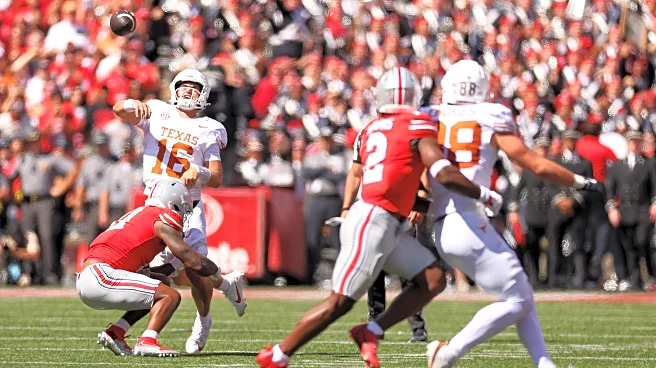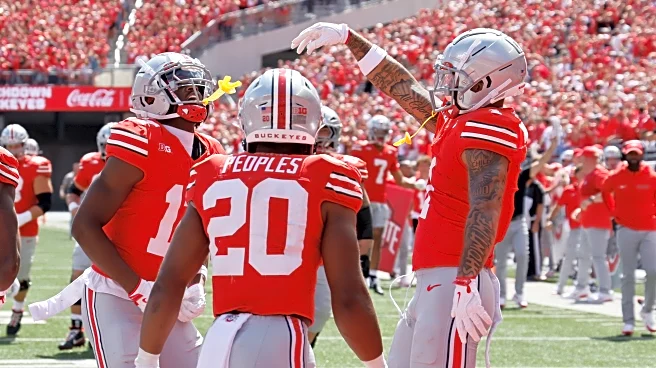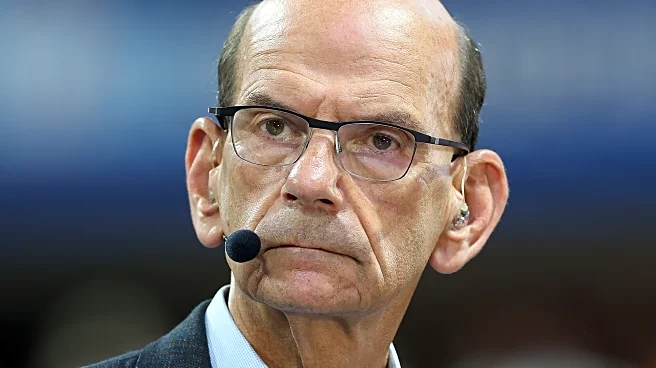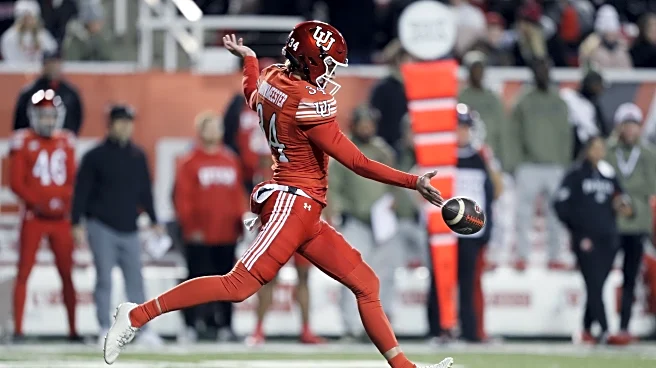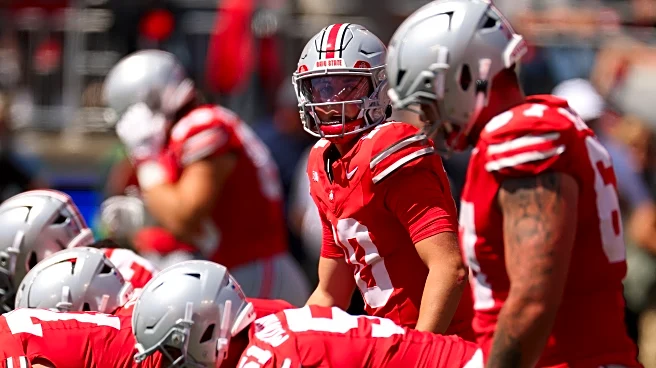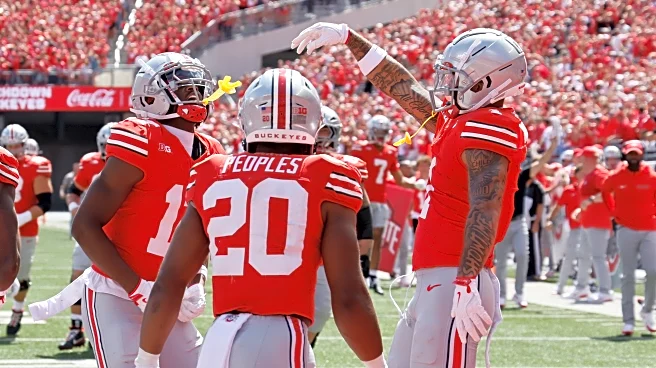What's Happening?
Arch Manning's debut as Texas' full-time starter against Ohio State resulted in a 14-7 loss, but the game set a record for viewership. According to Fox Sports, the matchup attracted an average of 16.6 million viewers, peaking at over 18.5 million, making it the most-watched Week 1 college football game ever. The game was highly anticipated, with both teams ranked in the top three of the Associated Press Top 25 poll. Ohio State, fresh off a national championship win, showcased a strong defense, limiting the scoring to just seven points through the first three quarters. Manning completed 17 of 30 passes for 170 yards, a touchdown, and an interception, showing potential but also areas for improvement.
Why It's Important?
The record-breaking viewership underscores the significant interest in college football, particularly in high-profile matchups involving promising players like Arch Manning. This level of attention can have substantial implications for broadcasting networks, advertisers, and the NCAA, potentially leading to increased revenue and investment in college sports. For Manning, the intense scrutiny and expectations could impact his development and future career prospects. The game's outcome also highlights Ohio State's continued dominance in college football, reinforcing their status as a top contender this season.
What's Next?
Following the game, Texas will need to address the areas of improvement identified during Manning's debut, particularly in offensive execution. Manning's performance will be closely monitored in upcoming games as he continues to adjust to the collegiate level. Ohio State will aim to maintain their momentum and capitalize on their strong start to the season. The high viewership numbers may prompt networks to schedule more high-profile games in prime slots, potentially reshaping college football broadcasting strategies.
Beyond the Headlines
The intense focus on Arch Manning's debut reflects broader cultural and media trends in sports, where individual athletes often become central figures in narratives that drive viewership and engagement. This phenomenon can lead to increased pressure on young athletes, affecting their mental health and performance. Additionally, the game's viewership success may influence how college football is marketed and consumed, with potential shifts towards more personalized and athlete-centric content.






